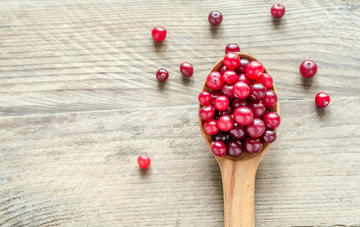
The Healing Power of Festive Plants
As we begin the countdown to 2024, I thought it fitting that we take a look at some of the fascinatingly festive plants. Not only that, but we will explore their medicinal uses so that you can incorporate them into your health and wellbeing regimes.
Holly
First up is one of my favourite festive plants. In the complementary medical field, Holly is most commonly found as Bach Flower Remedy. Holly is often mislabelled as a cure for anger, which is not strictly true. It does, however, provide relief from negative and aggressive emotions. In particular, the emotions it soothes are those directed at others, such as hatred, suspicion, envy and spite.
Whilst it is more than natural to experience these feelings, destructive emotions such as these, when left unregulated, can poison you on every level and destroy your health – mentally, physically and emotionally. In many cases, the underlying cause of negative emotions can be attached to an absence of love. This remedy is effective as it encourages our generosity of spirit and openness towards others. I have personally found these remedies are extremely useful in my practice and have seen great results with my patients. Most crucially, they are gentle and fast-acting.
Ivy
Ivy is a bitter, aromatic herb with an emetic effect and nauseating taste. Over the millennia, it has been a handy folk remedy. In particular, it has helped to relieve rheumatism, skin eruptions, swollen and painful joints, burns and suppurating cuts. When taken internally, it can also soothe Whooping Cough, Bronchitis and act as a Parasiticide. Due to its mildly toxic properties, I recommend using Ivy under the supervision of a qualified herbalist.
Cranberry
Whilst many of us share a fondness for Cranberry in food and drink, it also has a valid role in herbal medicine. The Cranberry plant has been used, traditionally, as a treatment for pleurisy. It is also extremely rich in vitamin C making it effective in staving off a host of winter bugs. Finally, Cranberry is regularly recommended for assisting with urinary tract infections and cystitis, although the science behind this is still limited.
Mistletoe
We all adore a magical mistletoe kiss, but this extraordinary plant also boasts fascinating history along with a valuable role in medicine and healing. Scandinavian legend dictates that Balder (the god of Peace) was shot by an arrow made of Mistletoe. After he was revived, Mistletoe became associated with the Goddess of Love. Everyone who passed under it was to give and receive a kiss, demonstrating that Mistletoe had become an emblem of love and not hate.
Mistletoe was also revered by the Druids. They believed that Mistletoe protected its possessor from all evil, and the oak trees it grew on provided wonderful cures. Mistletoe was only ever cut at a particular phase of the moon, following revelations that instructed them to hunt for it. If these dreams had not occurred – or, if Mistletoe had fallen from the tree, it was considered a forewarning of bad luck.
To this day, Mistletoe is studied for its anti-cancer properties. In addition, it is thought to relieve convulsions, delirium, menopausal symptoms, and heart conditions.
I thoroughly hope that you have enjoyed learning about some of our favourite festive plants and their healing properties. For more exclusive advice, visit my website JayneyGoddard.org, or reach out on one of my platforms. I adore hearing from you.
All my love,
Jayney
Tags: complementary medicine, cranberry, festive, healing, holly, ivy, mistletoe, plants, seasonal, Vitamin C, winter


